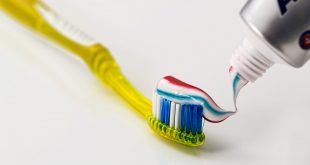The world of scale model and remote control hobbies is rather large, and requires much patience. Or at least that’s what the enthusiasts tell you. Starting in scale modeling requires lots of research about kits, supplies, and procedures, and many modelers don’t tell you much about the dangers of modeling. Many common mistakes in modeling are inhaling fume-rich enamel paints, or cutting your hands on sharp objects on sprues, or even contact of plastic cement on your skin. If not careful, this many lead to some serious health effects in the future.
Plastic cement is much like brick and mortar for plastic modeling kits. Most, if not all plastic models require plastic cement to glue parts together. Unlike its namesake, plastic cement is not at all like cement. It does not act like a putty, filling in spaces or gaps and glueing them together. It is more of an basic liquid, melting the soft plastic of modeling kits and “welds” them together, like a near instantaneous process of scoring and slipping on a block of clay. The extremely basic plastic cement contacting wet skin may cause more severe skin effects including thickening, cracking or fissuring of the skin. Prolonged exposure can cause severe skin damage in the form of chemical burns. Remember to always wear gloves to prevent such accidents.
Another source of danger in plastic modeling can be sharp objects on sprues. You risk the danger of cutting yourself with an x-acto knife when cutting parts. Remember to always cut away from you when handling knives. Additionally, parts that have been used will leave a sharp connection point on sprues, with may cause further discomfort. If you are very careful, you may be fortunate enough to avoid harm here.
Last but not least, the prospect of painting requires considerable knowledge about the paints, primers, and overcoating. Enamel-based paints give a nice glossy finish to models, but have major drawbacks caused by harmful fumes released when painting. Make sure you have proper ventilation if you are working in an enclosed space, since exposure to paints and solvents, especially when ventilation is poor, can cause nausea and irritate skin. Longer-term effects include asthma and lung cancer. Rashes are common on the chest and nose, and it is best to wear protected face gear for the painting process if you chose enamel paints over acrylic.
All in all, modeling is a hobby full of dangers, but it rewards those who are patient and careful with much pride. If one is careful enough to follow procedure, sufficiently prepare and protect themselves from harm, and overall, passionate and has patience, plastic modeling yields wonderful results.
 Tempus Magazine By Students, For Students
Tempus Magazine By Students, For Students 



